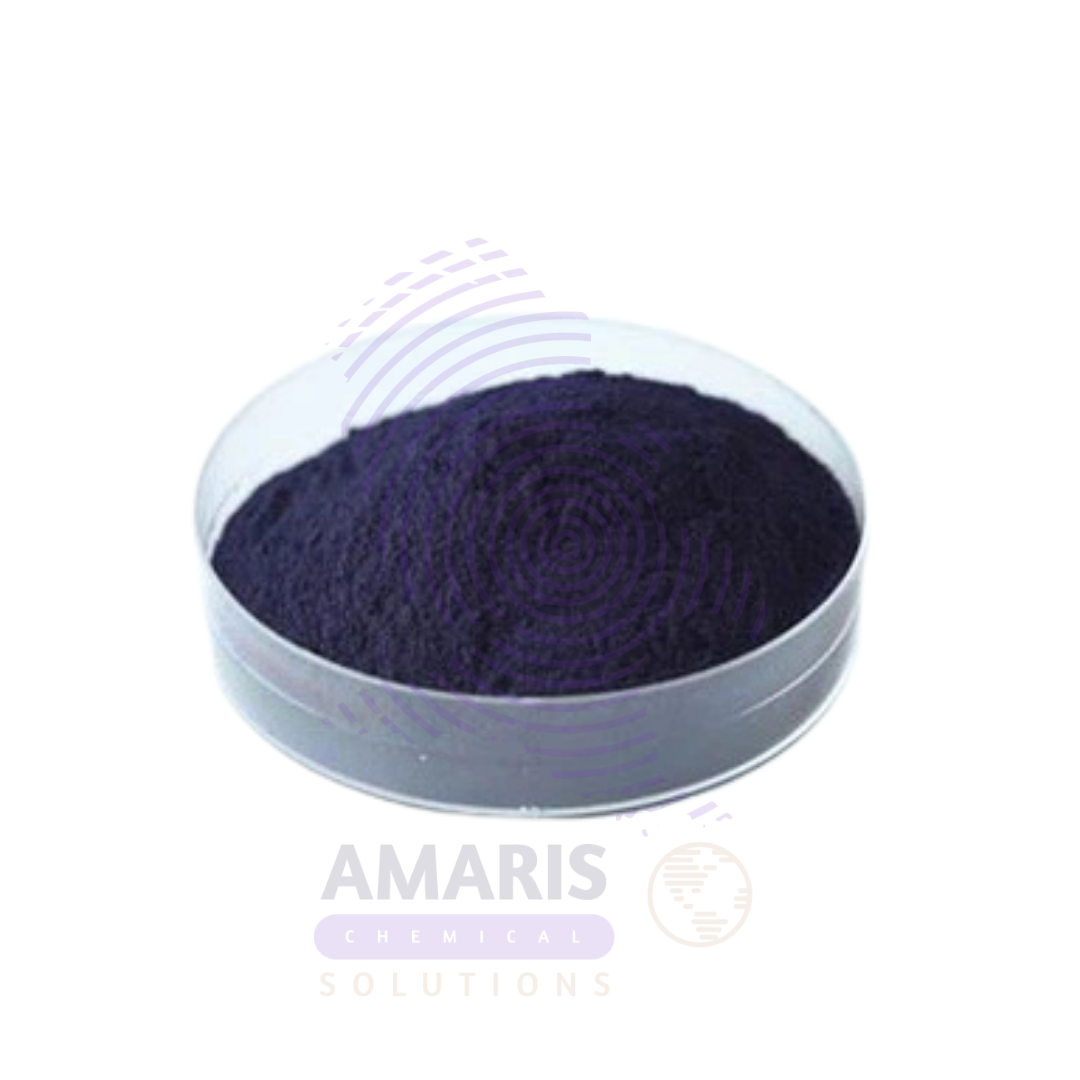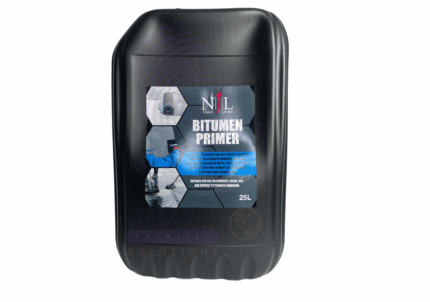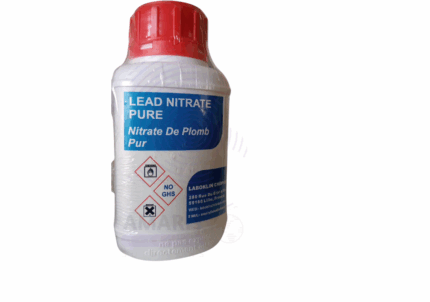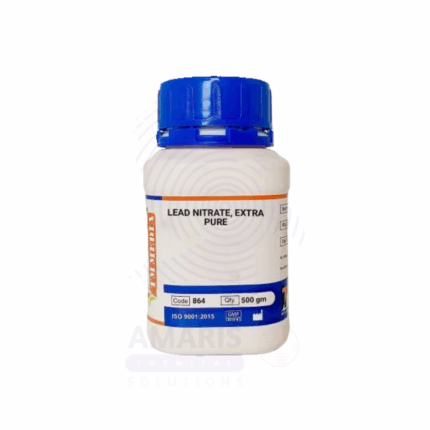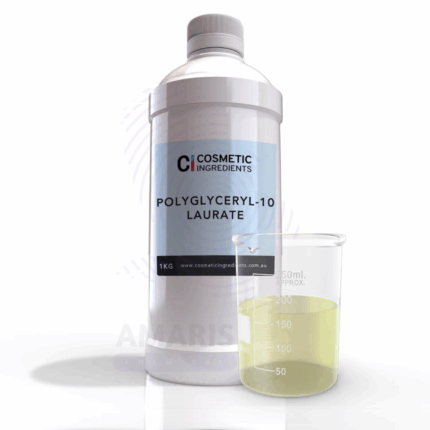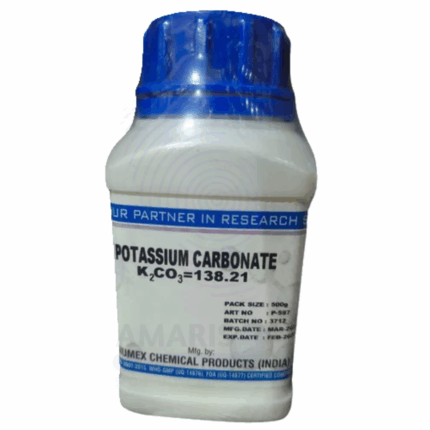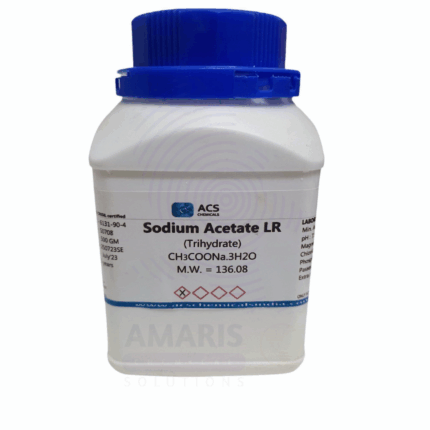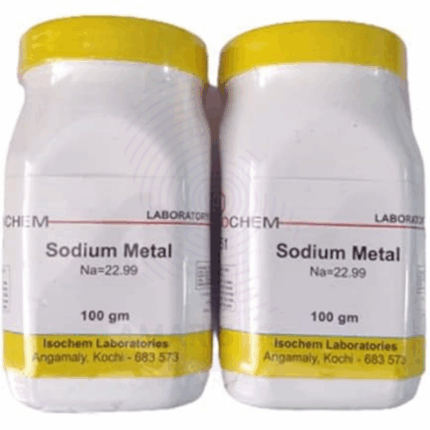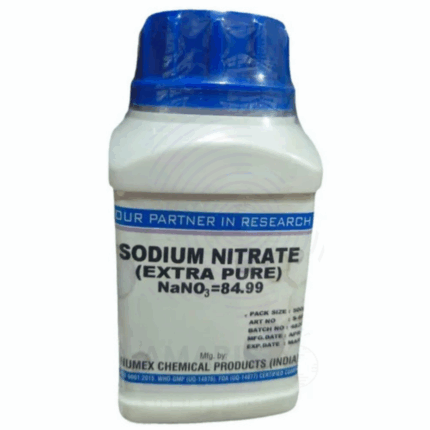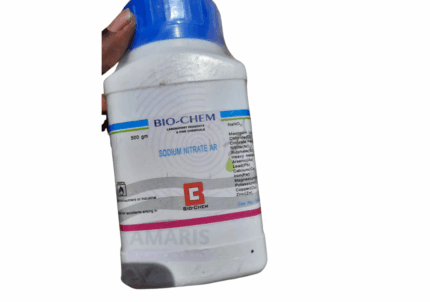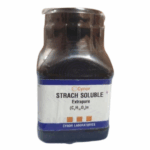
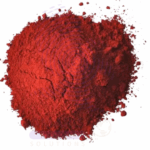
Solvent Black Extra Pure
$ 18.21
Solvent Black Extra Pure is a deep black powder dye primarily used in laboratory, textile, and cosmetic applications. It provides excellent staining and coloring properties, especially in microscopy, histology, and analytical procedures. It is highly soluble in organic solvents and insoluble in water, making it ideal for specialty dyeing and pigmentation uses. Proper storage and handling are essential to avoid dust inhalation and environmental contamination. Its Extra Pure grade ensures consistent performance in scientific and industrial uses.
Solvent Black Extra Pure
PRIMARY USES
- Analytical Reagent & Laboratory Applications:
Used as a dye and staining agent in microscopy and histology for cell and tissue visualization
• Applied as a tracer dye in chromatography and electrophoresis experiments
• Utilized in the qualitative and quantitative analysis of lipids and other organic compounds - Textile & Dyeing Industry:
Employed as a black dye for natural and synthetic fibers to achieve deep, fast color
• Used in printing inks and coatings for high-quality black pigmentation - Cosmetic Industry:
Used in formulations of mascaras, eyeliners, and other cosmetic products requiring stable black coloration
SECONDARY USES
- Leather Industry:
Used for black dyeing of leather goods for enhanced appearance and durability - Plastics & Polymer Industry:
Incorporated as a pigment in plastics and rubber products to provide black coloration
1. Basic Identification Attributes
- Chemical Name: Solvent Black
• CAS Number: Varies by specific compound (e.g., Solvent Black 3 CAS 12236-89-2)
• HS Code: 3204.17.00
• Molecular Formula: Varies by specific dye type
• Synonyms:
- Solvent Black 3
- Solvent Black
2. Physical & Chemical Properties
- Physical State: Powder or granular solid
• Color & Odor: Deep black, odorless or slight chemical odor
• Melting Point: Decomposes before melting
• Density: Approx. 1.2-1.5 g/cm³ depending on specific dye
• Solubility: - Soluble in organic solvents such as alcohol, acetone, and benzene
- Insoluble in water
• pH Level: Neutral to slightly acidic in solution
• Vapor Pressure: Negligible
• Flash Point: Not applicable
3. Safety & Hazard Attributes
Hazard Class (GHS Classification):
- May cause skin and eye irritation
- Possible respiratory sensitizer
• NFPA Ratings: - Health: 2
- Flammability: 1
- Reactivity: 0
• Exposure Limits: - No specific OSHA PEL or ACGIH TLV, but avoid inhalation of dust
• Reactivity: - Stable under normal conditions
- Avoid strong oxidizing agents
4. Storage & Handling Attributes
Storage Conditions:
- Store in a cool, dry, well-ventilated area
- Keep container tightly closed
• Incompatible Materials: - Strong oxidizers, acids, and alkalis
• Container Type: - Plastic or sealed metal containers
• Shelf Life: - Stable for several years if stored properly
• Special Handling Requirements: - Avoid dust formation and inhalation
- Use gloves, goggles, and dust mask
5. Regulatory & Compliance Attributes
Regulatory Status:
- Approved for industrial and laboratory use
- Not approved as food additive or pharmaceutical ingredient
• Transportation Restrictions: - Not classified as hazardous for transport
• Waste Disposal Method: - Dispose according to local environmental regulations
6. Environmental & Health Impact
Ecotoxicity:
- Moderate toxicity to aquatic life, avoid release into water bodies
• Persistence in Environment: - Low biodegradability; persists in soil and water for some time
• Carcinogenicity/Mutagenicity: - Not classified as carcinogenic, but data is limited
• Biodegradability: - Poorly biodegradable
SAFETY PRECAUTIONS
Personal Protective Equipment (PPE):
• Wear chemical-resistant gloves and protective clothing
• Use safety goggles or face shield
• Use dust mask or respirator when handling powder
Handling:
• Handle in a well-ventilated area
• Avoid inhalation of dust and contact with skin and eyes
• Wash hands thoroughly after handling
Storage:
• Store in tightly sealed container
• Keep in a dry, cool, well-ventilated place
• Avoid exposure to incompatible materials
FIRST AID MEASURES
Inhalation:
• Move to fresh air immediately
• Seek medical attention if breathing difficulties occur
Skin Contact:
• Wash with plenty of soap and water
• Remove contaminated clothing
• Seek medical advice if irritation persists
Eye Contact:
• Rinse eyes with water for at least 15 minutes
• Seek medical attention promptly
Ingestion:
• Rinse mouth with water
• Do not induce vomiting unless directed by medical personnel
• Seek medical attention if symptoms appear
FIRE FIGHTING MEASURES
Flammability:
• Combustible dust under certain conditions
Extinguishing Media:
• Use water spray, foam, dry chemical, or CO₂ extinguisher
Hazardous Combustion Products:
• May produce carbon monoxide, carbon dioxide, and nitrogen oxides
Firefighter Protection:
• Wear self-contained breathing apparatus (SCBA) and full protective gear


 Preservatives(food)
Preservatives(food) Flavor Enhancers
Flavor Enhancers Acidulants
Acidulants Sweeteners
Sweeteners Antioxidants
Antioxidants Colorants(food)
Colorants(food) Nutraceutical Ingredients (food)
Nutraceutical Ingredients (food) Nutrient Supplements
Nutrient Supplements Emulsifiers
Emulsifiers
 Collectors
Collectors Dust Suppressants
Dust Suppressants Explosives and Blasting Agents
Explosives and Blasting Agents Flocculants and Coagulants
Flocculants and Coagulants Frothers
Frothers Leaching Agents
Leaching Agents pH Modifiers
pH Modifiers Precious Metal Extraction Agents
Precious Metal Extraction Agents
 Antioxidants(plastic)
Antioxidants(plastic) Colorants (Pigments, Dyes)
Colorants (Pigments, Dyes) Fillers and Reinforcements
Fillers and Reinforcements Flame Retardants
Flame Retardants Monomers
Monomers Plasticizers
Plasticizers Polymerization Initiators
Polymerization Initiators Stabilizers (UV, Heat)
Stabilizers (UV, Heat)
 Antifoaming Agents
Antifoaming Agents Chelating Agents
Chelating Agents Coagulants and Flocculants
Coagulants and Flocculants Corrosion Inhibitors
Corrosion Inhibitors Disinfectants and Biocides
Disinfectants and Biocides Oxidizing Agents
Oxidizing Agents pH Adjusters
pH Adjusters Scale Inhibitors( water)
Scale Inhibitors( water)
 Antioxidants(cosmetic)
Antioxidants(cosmetic) Emollients
Emollients Fragrances and Essential Oils
Fragrances and Essential Oils Humectants
Humectants Preservatives
Preservatives Surfactants(cosmetic)
Surfactants(cosmetic) Thickeners
Thickeners UV Filters
UV Filters
 Fertilizers
Fertilizers Soil Conditioners
Soil Conditioners Plant Growth Regulators
Plant Growth Regulators Animal Feed Additives
Animal Feed Additives Biostimulants
Biostimulants Pesticides (Herbicides, Insecticides, Fungicides)
Pesticides (Herbicides, Insecticides, Fungicides)
 Active Pharmaceutical Ingredients (APIs)
Active Pharmaceutical Ingredients (APIs) Excipients
Excipients Solvents(pharmaceutical)
Solvents(pharmaceutical) Antibiotics
Antibiotics Antiseptics and Disinfectants
Antiseptics and Disinfectants Vaccine Adjuvants
Vaccine Adjuvants Nutraceutical Ingredients (pharmaceutical)
Nutraceutical Ingredients (pharmaceutical) Analgesics & Antipyretics
Analgesics & Antipyretics
 Analytical Reagents
Analytical Reagents Solvents(lab)
Solvents(lab) Chromatography Chemicals
Chromatography Chemicals Spectroscopy Reagents
Spectroscopy Reagents microbiology-and-cell-culture-reagents
microbiology-and-cell-culture-reagents Molecular Biology Reagents
Molecular Biology Reagents Biochemical Reagents
Biochemical Reagents Inorganic and Organic Standards
Inorganic and Organic Standards Laboratory Safety Chemicals
Laboratory Safety Chemicals Specialty Laboratory Chemicals(Special Laboratory Equipment)
Specialty Laboratory Chemicals(Special Laboratory Equipment)
 Demulsifiers
Demulsifiers Hydraulic Fracturing Fluids
Hydraulic Fracturing Fluids Scale Inhibitors(oil)
Scale Inhibitors(oil) Surfactants(oil)
Surfactants(oil) Drilling Fluids
Drilling Fluids
 Dyes and Pigments
Dyes and Pigments Bleaching Agents
Bleaching Agents Softening Agents
Softening Agents Finishing Agents
Finishing Agents Antistatic Agents
Antistatic Agents
 Admixtures
Admixtures Waterproofing Agents
Waterproofing Agents Sealants and Adhesives
Sealants and Adhesives Curing Compounds
Curing Compounds Concrete Repair Chemicals
Concrete Repair Chemicals Anti-Corrosion Coatings
Anti-Corrosion Coatings
 Surfactants(cleaning)
Surfactants(cleaning) Builders
Builders Enzymes
Enzymes Solvents (Cleaning)
Solvents (Cleaning) Fragrances
Fragrances
 Electronic Chemicals
Electronic Chemicals Catalysts
Catalysts Lubricants
Lubricants Photographic Chemicals
Photographic Chemicals Refrigerants
Refrigerants Automotive chemicals
Automotive chemicals Pyrotechnic Chemicals
Pyrotechnic Chemicals
 Biodegradable Surfactants
Biodegradable Surfactants Bio-based Solvents
Bio-based Solvents Renewable Polymers
Renewable Polymers Carbon Capture Chemicals
Carbon Capture Chemicals Wastewater Treatment Chemicals
Wastewater Treatment Chemicals
 Pigments
Pigments Solvents(paint)
Solvents(paint) Specialty Coatings
Specialty Coatings Binders/Resins
Binders/Resins Additives
Additives Driers
Driers Anti-Corrosion Agents
Anti-Corrosion Agents Functional Coatings
Functional Coatings Application-Specific Coatings
Application-Specific Coatings
 Fresh Herbs
Fresh Herbs Ground Spices
Ground Spices Whole Spices
Whole Spices Spice Blends
Spice Blends Dried Herbs
Dried Herbs
 Leavening Agents
Leavening Agents Dough Conditioners
Dough Conditioners Flour Treatments
Flour Treatments Fat Replacers
Fat Replacers Decoratives
Decoratives Preservatives(baking)
Preservatives(baking)
 Plasticizers & Softeners
Plasticizers & Softeners Reinforcing Agents
Reinforcing Agents Adhesion Promoters
Adhesion Promoters Vulcanizing Agents
Vulcanizing Agents Antidegradants
Antidegradants Blowing Agents
Blowing Agents Fillers & Extenders
Fillers & Extenders Accelerators & Retarders
Accelerators & Retarders